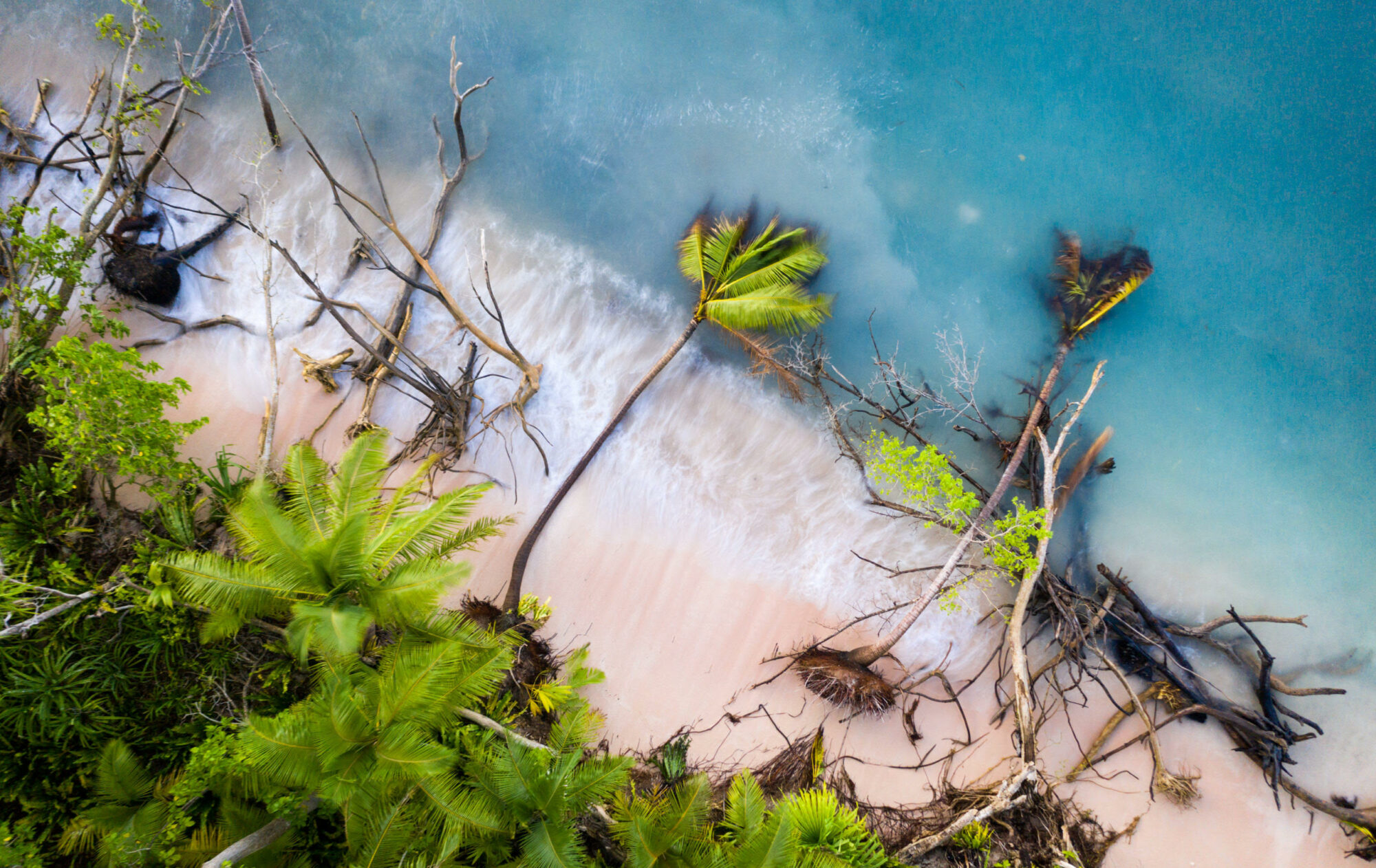IFPRI – International Food Policy Research Institute
CCAFS – Research Program on Climate Change, Agriculture, and Food Security
CGIAR – Consultative Group on International Agricultural Research
For many people, sea level rise is considered the malignant poster child of the worsening climate disaster. The melting polar ice caps pose an overbearing threat to the major coastal cities around the world. Popular culture depictions of vast floods engulfing Manhattan, and interactive maps showing the likely devastation in your own area are dramatic, and easily accessible. Dramatic as they are, these biblical floods are not representative of the likely near-term effects climate-related sea level rise will have on many at-risk people’s livelihoods globally. This blog post looks at the gradual encroachment of sea water into agricultural lands. The accompanying increases in levels of soil salinity can have devastating impacts on the production capabilities of these farmlands, threatening food security in vulnerable regions.
The global food system is underpinned by healthy soil systems. The cultivation of plantlife for food crops, animal feed, and even fuel sources rely on these staggeringly complex ecosystems. Threaded within these diverse deposits of silt, sand, and other particles are a wealth of interconnecting organisms that catalyse the healthy development of sustainable food systems. These systems, like most things in life, require balance. When the volume of one component ebbs and flows, so too does the robustness of the soil itself. Salt intrusion due to climate change has the potential to ravage areas of forest and agricultural lands leading to redundancy of the systems. CGIAR, and their associated institutions are looking at this problem actively and are working towards potential mitigation and adaptation measures where possible.

Partners at the IFPRI, and CCAFS have looked at the impact of salinity intrusion (SI) in South Asia. Rabbani (2013) noted that 6.7 million hectares in India, and 1.06 million hectares in Bangladesh are threatened by excess salinity. This endangers soil quality, infrastructure, fisherfolk and rice cultivators, and livelihoods in general. SI has been linked to a steady decline in the net cropped area in coastal Bangladesh (Baten, 2015), while similar groundwater contamination is widespread in India (Naidu et al. 2013). Progressive climate change is likely to see an increase in the extent and frequency of contamination, and solutions will need to be found to combat this.
Pathak et al. (2018) identified a multipronged approach as necessary for the development of AI tolerant cultivars. This approach consisted of the following:
- Preservation and purification of traditional varieties.
- Screening traditional landraces for salinity tolerance traits.
- Biotechnological approaches towards modification of genetic characteristics of cultivars.
This study identified mangroves as a potential gene donor for new crop varieties, due to their high salt tolerance. They noted the importance of establishing a deep understanding of stress response mechanisms at a molecular level in relevant plant species. This development should allow for progression towards the creation of cultivars that can withstand varied salinity levels. Benefits of such an approach include sustainability, ecologically beneficial, and cheap nature of salt-tolerant varieties to manage SI in vulnerable areas. The same study notes, however, that the worsening climate disaster is likely to lead to unpredictability in weather patterns. For this reason, any cultivars developed will need to be tolerant of other abiotic stresses in addition to salinity. They may be exposed to drought one season, and storm surges the next.
Climate Smart Agriculture will play a key role in managing SI in areas such as coastal South Asia. Integrated water resource management approaches should be adopted to prevent contamination where possible and reduce stress on the agricultural systems. Sluice gates are considered critical by CCAFS in containing salinity, but they do note the potential for conflict upon their installation. These gates can lead to friction between shrimp farmers and rice farmers due to their conflicting interests. The study notes strong community management, and the mutually beneficial operation of such gates is critical if they are to be a viable solution long-term. The study proposes the formation of farmers’ organisations based on the hydrological limit, and catchment areas of sluice gates, as opposed to the more administrative limits structure of management.

Bangladesh, India, and other at-risk countries like Vietnam exist in a state of extreme vulnerability currently. As the climate crisis develops, uncertainty will grow, and dynamism will be needed to tackle issues as they arise, if prevention is not possible. Strong policy making decisions, and international collaboration will be key to the viability of many low-lying coastal food-growing regions globally. The global network of food security organisations, private industry, and governments will need to focus their efforts on safeguarding millions of vulnerable people from the effects of SI. Evidence points to Climate Smart Agriculture as being a good place to start.
Bibliography
Awal, M. A. (2014). Water logging in southwestern coastal region of Bangladesh: local adaptation and policy options. Science Postprint, 1(1), e00038.
Baten MS. 2015. Salinity Intrusion in Interior Coast of Bangladesh: Challenges to Agriculture in SouthCentral Coastal Zone. American Journal of Climate Change 4:248-262.
Naidu LS, G Rao VVS, T Rao G, Mahesh J, Padalu G, Sarma VS, Prasad PR, Rao SM, R Rao BM. 2013. An integrated approach to investigate saline water intrusion and to identify the salinity sources in the Central Godavari delta, Andhra Pradesh, India. Arabian Journal of Geosciences, 6(10):3709-3724.
Pathak, H., Deb Pal, B., & Joshi, P. K. (2018). Climate change induced salinity intrusion and its implications for agriculture.
Rabbani GR. 2013. Loss and Damage from salinity intrusion in Sathkira District, coastal Bangladesh. Bonn: United Nations University Institute for Environment and Human Security: Loss and Damage in Vulnerable Countries Initiative
Salehin, M., Chowdhury, M. M. A., Clarke, D., Mondal, S., Nowreen, S., Jahiruddin, M., & Haque, A. (2018). Mechanisms and drivers of soil salinity in coastal Bangladesh. In Ecosystem services for well-being in deltas (pp. 333-347). Palgrave Macmillan, Cham.

